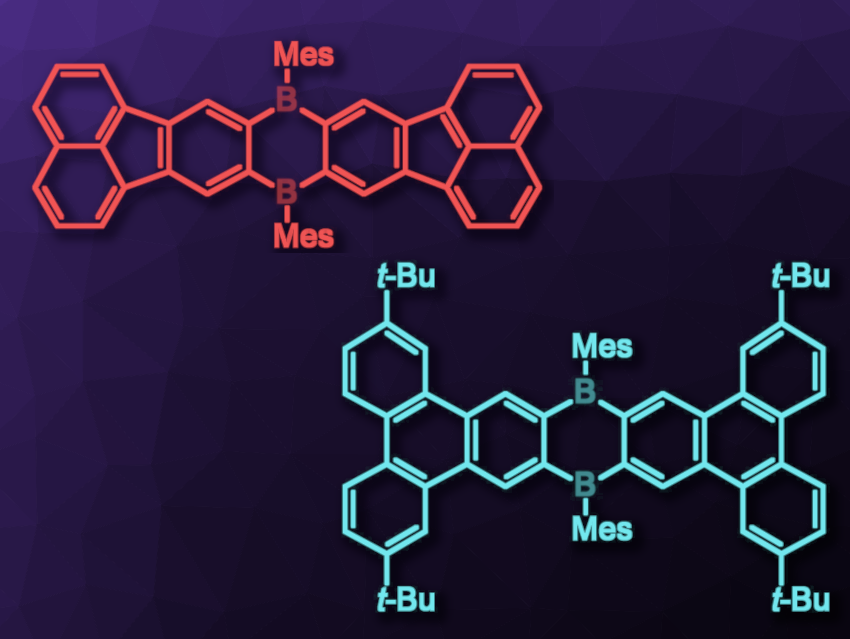Justina Jovaišaitė, Vilnius University, Lithuania, Matthias Wagner, University of Frankfurt am Main, Germany, and colleagues have developed organic dyes showing a particularly long afterglow after being excited by light. Doping a polymer with newly synthesized diboraanthracene dyes resulted in an intense red or blue–green dual afterglow, which was composed of persistent thermally activated delayed fluorescence and long phosphorescence at room temperature. Such organic materials could find important optoelectronic applications, such as in data encryption, information recording, and sensors.
Diboraanthracene Dyes
“When you try to develop materials with a more efficient phosphorescence, the problem is that a more intensive phosphorescence often results in the decrease of phosphorescence lifetime and vice versa,” says Justina Jovaišaitė. To overcome this problem, the team developed diboraanthracene dyes for which the efficiency of long-lasting phosphorescence was supplemented by the efficiency of persistent thermally activated delayed fluorescence.
To achieve the desired dual afterglow, the team modified the diboraanthracene scaffold by synthetic methods. Diboraanthracene compounds have the basic aromatic structure of the organic chemical anthracene but contain two boron atoms. Synthetic modification not only lead to a more intense afterglow than in purely phosphorescing materials, but it also allowed the researchers to create organic dyes with different afterglow colors, which were tunable. “Upon cooling, the afterglow color either shifted from red to green or from green to blue. This can be of extreme importance for the development of temperature sensors,” Jovaišaitė says.
Uses of “Afterglow” Materials
The newly developed organic dyes could be used in data recording and information encryption. To demonstrate this, the researchers prepared transparent layers coated by the studied organic compounds. They irradiated the samples with intense laser light to write information, which could be read when the entire layer was exposed to less intense UV light.
The researchers hope that, through more in-depth investigation of the photophysical properties of their system, they will be able to optimize and control these afterglow properties further. They plan to increase the duration, efficiency, and tunability of the afterglow. “Polymer-based organic afterglow materials are desirable because of their flexibility, transparency, and suitability for large-scale production,” Jovaišaitė says.
- Diboraanthracene‐Doped Polymer Systems for Colour‐Tuneable Room‐Temperature Organic Afterglow,
Justina Jovaišaitė, Sven Kirschner, Steponas Raišys, Gediminas Kreiza, Paulius Baronas, Saulius Juršėnas, Matthias Wagner,
Angew. Chem. Int. Ed. 2022.
https://doi.org/10.1002/anie.202215071




![Synthesis of [c2]Daisy Chains via Mechanochemistry](https://www.chemistryviews.org/wp-content/uploads/2025/04/202504_RotaxanesWithSolidStateMechanochemistry-125x94.png)